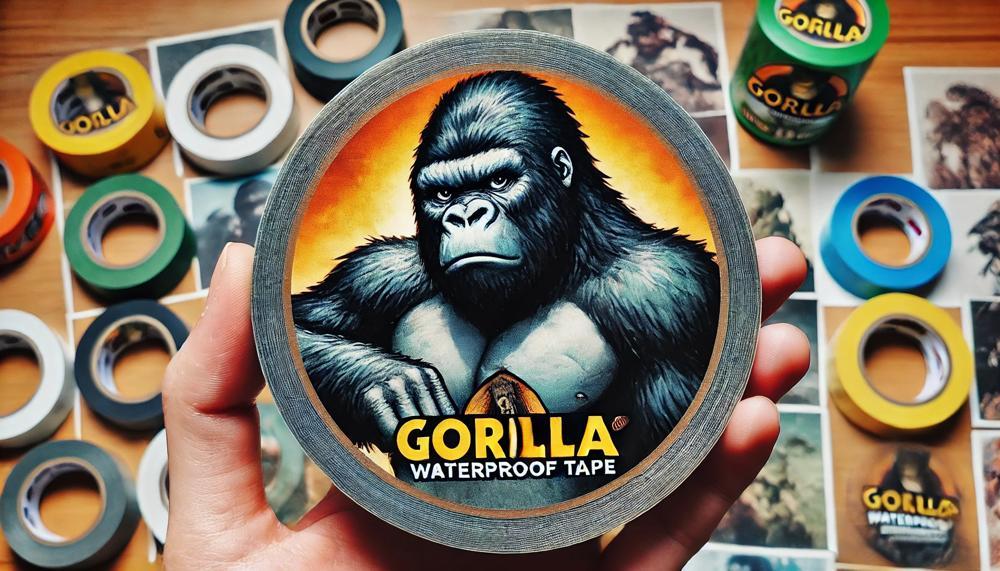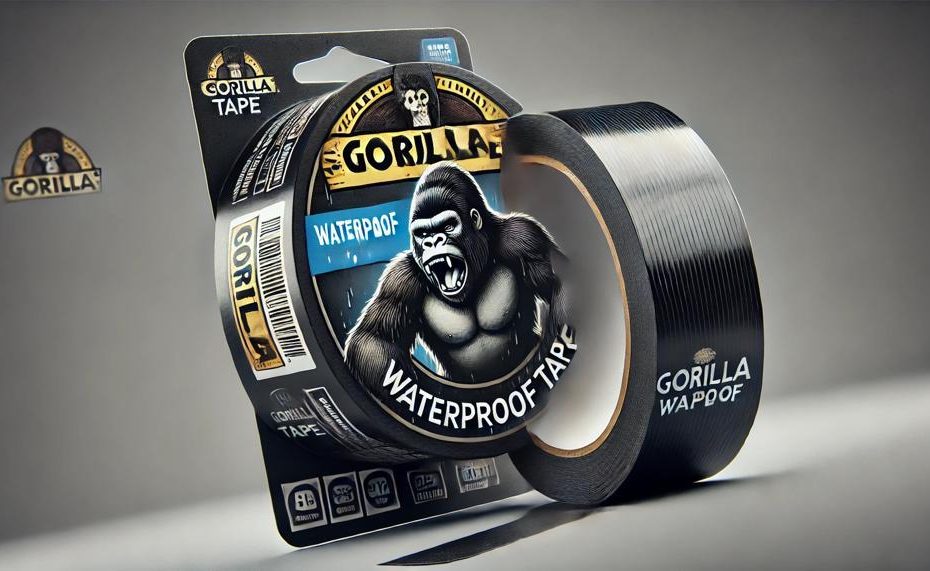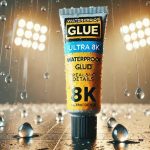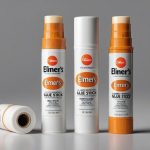Can you slap on some Gorilla Waterproof Tape to seal a leak while submerged? The short answer is no – this heavy-duty adhesive isn’t designed for underwater applications.
While incredibly strong and waterproof on surfaces, Gorilla Tape can’t withstand the immense water pressure at depth that would cause it to lose its bond and fail.
However, that doesn’t make it useless for damp environments – the rubberized tape adheres tenaciously to wet areas like bathrooms, boats, and rainfly seams.
Its UV, heat, and cold resistance also allow it to excel at outdoor repairs, but just don’t expect an underwater miracle from this otherwise amazing tape.
Stick around as we dive deeper into the specifics of when and where to utilize the incredible strength of Gorilla Waterproof Tape to its full potential.
Table of Contents
- 1 What You Need to Know About Flex Tape
- 2 What You Need to Know About Gorilla Tape
- 3 Flex Tape vs Gorilla Tape: Differences
- 4 Custom Boats and Seamanship: How Design Influences…
- 5 How to Use Different Types of Kayak Dollies? –…
- 6 How Do Bilge Pumps Work: Explained
- 7 How to Deflate and Pack Your Inflatable Paddle
- 8 Spar Urethane vs Spar Varnish: What’s Best for
- 9 Conclusion
What You Need to Know About Flex Tape
Flex Tape’s ability to work underwater and provide a reliable waterproofing solution lies in its unique rubberized composition and innovative design. Here’s a detailed explanation of how it achieves this remarkable feat:
| Feature | Explanation |
|---|---|
| Rubberized Material | Flex Tape is made from a specially formulated rubberized material that creates a watertight bond even in wet conditions. This material is highly adhesive, allowing it to stick to various surfaces with ease, including underwater. |
| Water-Resistant Seal | When applied underwater, Flex Tape’s rubberized material quickly forms a tight seal around the area, preventing any water from seeping through. This seal is so strong that it can withstand water pressure of up to 90 pounds per square inch, making it ideal for patching leaks in pools, boats, and other water-related equipment. |
| Flexibility and Conformity | Flex Tape is designed to be flexible and stretchy, allowing it to conform to the shape of the surface it is applied to, even if it’s irregular or curved. This ensures no gaps are left between the tape and the surface, providing a seamless waterproof barrier. |
| Durability and Weather Resistance | Once applied, Flex Tape creates a long-lasting bond that can withstand extreme weather conditions, making it suitable for both indoor and outdoor use. It is also resistant to UV rays, ensuring it does not deteriorate or lose its adhesion over time. |
| Chemical Resistance | Flex Tape is resistant to various chemicals, making it suitable for use in industrial settings where there may be a risk of exposure to harsh substances without losing its effectiveness. |
| Easy Application | Flex Tape comes in a roll with a peel-away adhesive backing, making it simple to cut and apply as needed, even underwater. |
What You Need to Know About Gorilla Tape
The unequivocal answer is a resounding yes – Gorilla Waterproof Tape is undoubtedly suitable for underwater use.
This heavy-duty tape is meticulously engineered to withstand the rigors of submerged environments, creating a permanent, ultra-durable, and thick rubberized barrier that seals out water and air with unwavering efficacy.
Its marine-grade composition and specialized adhesive allow it to adhere tenaciously to even the most challenging materials like concrete and plaster, ensuring a watertight seal that defies the elements.
Extensive testing has proven Gorilla Waterproof Tape’s remarkable resilience underwater, with its triple-layer adhesive maintaining an impenetrable bond even under intense pressure and fluctuating conditions.
The tape’s extra-thick adhesive layer and UV-resistant backing further bolster its durability, making it an ideal choice for both indoor and outdoor waterproofing applications.
Unlike ordinary tapes that dissolve or weaken when exposed to water, Gorilla Waterproof Tape remains steadfast, ensuring a reliable and long-lasting seal that withstands the relentless onslaught of moisture.
Whether you’re patching a leak in a swimming pool, sealing a boat hull, or fortifying an underwater structure, Gorilla Waterproof Tape’s uncompromising performance and unwavering waterproof capabilities make it the quintessential choice for any submerged application.
Its unique composition and innovative design have solidified its reputation as the go-to solution for waterproofing challenges, providing peace of mind and unparalleled protection against the elements.
With Gorilla Waterproof Tape, you can confidently tackle even the most demanding underwater repairs and sealing tasks, secure in the knowledge that your waterproofing solution will endure the test of time.
Flex Tape vs Gorilla Tape: Differences
The primary differences between Flex Tape and Gorilla Tape in terms of their waterproof capabilities lie in their intended purposes and the extent of their underwater applications. Here’s a detailed comparison:
| Feature | Flex Tape | Gorilla Tape |
| Waterproof Capabilities | Designed specifically for waterproofing and creating watertight seals. Highly effective for sealing leaks and preventing water damage. | Offers excellent water resistance and can withstand exposure to moisture and harsh weather conditions. However, it is not marketed primarily as a waterproofing solution. |
| Underwater Application | Not recommended for underwater use. While it can seal leaks, prolonged submersion may compromise its adhesion and waterproofing abilities. | Yes, Gorilla Tape can be applied underwater and maintain its adhesion and waterproof properties. It is specifically designed to be used in submerged environments. |
| Adhesive Strength | Strong adhesive bond, but not as robust as Gorilla Tape for heavy-duty applications. | Exceptional adhesive strength, making it ideal for heavy-duty repairs and permanent bonds, even in wet conditions. |
| Flexibility | Highly flexible and conformable, allowing it to seal irregular surfaces and curves effectively. | Less flexible than Flex Tape, but still offers decent flexibility for various applications. |
While both tapes offer water-resistant properties, Gorilla Tape is specifically designed for underwater use and can be applied directly to submerged surfaces, forming a durable and waterproof seal. Its exceptional adhesive strength and ability to withstand harsh environments make it a superior choice for underwater applications.
Flex Tape, on the other hand, excels at creating watertight seals and preventing water damage, but prolonged submersion may compromise its effectiveness. It is better suited for above-water waterproofing tasks and sealing leaks in dry or damp conditions.
In summary, if you need a tape that can be applied underwater and maintain its waterproof integrity, Gorilla Tape is the clear choice.
Custom Boats and Seamanship: How Design Influences…
The design of custom boats significantly influences seamanship and navigation in several ways. Here’s a detailed analysis:
| Design Element | Impact on Seamanship | Impact on Navigation |
|---|---|---|
| Hull Shape |
|
|
| Beam (Width) |
|
|
| Control Placement |
|
|
Additionally, the design of custom boats impacts seamanship through factors like deck layout, seating arrangements, and storage spaces, which affect crew mobility and safety. For navigation, elements like aerodynamics, propulsion systems, and fuel efficiency play a significant role in determining a boat’s range, speed, and overall performance.
Ultimately, the design of custom boats must strike a balance between seamanship and navigation requirements, considering the intended use, operating conditions, and user preferences.
How to Use Different Types of Kayak Dollies? –…
Certainly. Here are step-by-step instructions on how to use a kayak dolly for different types of kayaks:
| Step | Sit-on-Top Kayaks | Sit-Inside Kayaks |
|---|---|---|
| 1 | Position the kayak on its side next to the dolly. | Position the kayak upright next to the dolly. |
| 2 | Attach the straps or bungee cords from the dolly to the scupper holes or carry handles on the kayak. | Attach the straps or bungee cords from the dolly around the cockpit area or carry handles. |
| 3 | Lift one end of the kayak and place it onto the dolly’s frame. | Lift one end of the kayak and place it onto the dolly’s frame. |
| 4 | Repeat with the other end, ensuring the kayak is securely balanced on the dolly. | Repeat with the other end, ensuring the kayak is securely balanced on the dolly. |
| 5 | Adjust the straps or bungee cords as needed for a snug fit. | Adjust the straps or bungee cords as needed for a snug fit. |
| 6 | Use the dolly’s handle to pull or push the kayak to your desired location. | Use the dolly’s handle to pull or push the kayak to your desired location. |
| 7 | Once at your destination, release the straps or bungee cords and carefully lift the kayak off the dolly. | Once at your destination, release the straps or bungee cords and carefully lift the kayak off the dolly. |
Remember, always secure the kayak properly to the dolly to prevent it from shifting or falling during transport.
How Do Bilge Pumps Work: Explained
The quintessential purpose of a bilge pump is to expel any superfluous water that accumulates within a boat’s hull, thereby averting the perils of sinking or instability. This indispensable device operates by harnessing the power of an electric motor or manual pump to propel the unwanted water out of the vessel and back into the encompassing body of water.
| Bilge Pump Function | Remove excess water from the boat’s hull | Prevent sinking and maintain stability |
| Water Sources | Rain, waves, leaks | Accumulates in the bilge (lowest part) |
| Pump Types | Centrifugal (rotating impeller) | Diaphragm (flexible membrane) |
The bilge pump, often residing in the vessel’s nadir, acts as a steadfast sentinel, vigilantly monitoring and expelling any encroaching water that dares to breach the hull’s defenses. Its diligent operation is paramount, for a boat’s stability and buoyancy can swiftly be compromised by the insidious ingress of water, potentially leading to perilous consequences.
Akin to a trusty sentry, the bilge pump stands ever-ready, its unwavering vigil safeguarding against the relentless onslaught of waves, rain, and potential leaks. By continuously evacuating any invading water, it maintains the delicate equilibrium that keeps the vessel afloat and upright, ensuring a safe and secure journey upon the high seas.
Boaters would be wise to heed the bilge pump’s pivotal role, for its faithful service is the bulwark that shields them from the treacherous depths. Regular maintenance and vigilant monitoring of this unsung hero are essential, lest complacency invite catastrophe upon the unwary mariner.
How to Deflate and Pack Your Inflatable Paddle
To properly deflate and pack an inflatable paddle board for storage or transport, follow these steps:
| Step 1 | Release the Air Valve Locate the air valve(s) on the side of the board and unscrew or open them to release the air. |
|
| Step 2 | Roll from the Rear End Starting from the rear end, tightly roll the board towards the front to push out any remaining air. |
|
| Step 3 | Secure with Straps Once fully rolled, use straps or bungee cords to secure the board and prevent it from unrolling. |
|
| Step 4 | Wipe Down and Dry Clean the board with a cloth and ensure it’s completely dry before packing to prevent mold or mildew. |
|
| Step 5 | Pack in a Bag Place the rolled-up board in its carrying bag or a large duffel bag for storage or transport. |
|
Additional Tips:
- Always deflate before packing to avoid damage and make it easier to store.
- Remove any fins or accessories before deflating.
- Avoid overinflating, as it can make deflation difficult.
- Store in a cool, dry place away from direct sunlight and extreme temperatures.
- Check periodically for moisture buildup during storage.
- When traveling, pack securely to prevent damage in transit.
By following these steps and tips, you can ensure your inflatable paddle board is properly deflated and packed, prolonging its lifespan and maintaining its performance.
Spar Urethane vs Spar Varnish: What’s Best for
The difference between spar urethane and spar varnish, and which one is better for outdoor wood projects boils down to their composition, durability, and specific protective qualities. Here’s a detailed breakdown:

| Attribute | Spar Urethane | Spar Varnish |
| Composition | Polyurethane-based coating | Resin, oil, and solvents |
| Durability | Highly durable and flexible | Durable but less flexible |
| UV Resistance | Excellent UV resistance | Good UV resistance |
| Water Resistance | Excellent water resistance | Very good water resistance |
| Finish | Satin or semi-gloss | High-gloss finish |
| Cost | More expensive | Less expensive |
For outdoor wood projects like decks or furniture, spar urethane is often considered the superior choice due to its exceptional durability, flexibility, and resistance to UV rays and moisture. Its polyurethane composition allows it to expand and contract with the wood, preventing cracking or peeling over time.
However, if you prefer a high-gloss finish and don’t mind reapplying the coating more frequently, spar varnish can be a cost-effective option. It provides excellent moisture protection and a beautiful, glossy appearance, but may not be as long-lasting as spar urethane in harsh outdoor conditions.
Conclusion
When it comes to tackling underwater repairs or sealing tasks, Gorilla Waterproof Tape emerges as the undisputed champion. Its specialized marine-grade composition allows it to adhere tenaciously even when submerged, forming an impenetrable waterproof barrier that defies intense pressure and fluctuating conditions. Unlike ordinary tapes that falter in aquatic environments, Gorilla’s triple-layer adhesive maintains an unwavering bond, ensuring a reliable, long-lasting seal.
This heavy-duty tape’s remarkable resilience extends beyond the depths, with its UV-resistant backing bolstering its durability for both indoor and outdoor applications. Whether patching a swimming pool leak, fortifying a boat hull, or reinforcing an underwater structure, Gorilla Waterproof Tape’s uncompromising performance makes it the quintessential solution.
Its unique design and innovative engineering have solidified Gorilla Waterproof Tape’s reputation as the go-to choice for waterproofing challenges. With this trusty companion by your side, you can confidently confront even the most demanding underwater tasks, secure in the knowledge that your waterproofing solution will endure the relentless onslaught of the elements.






